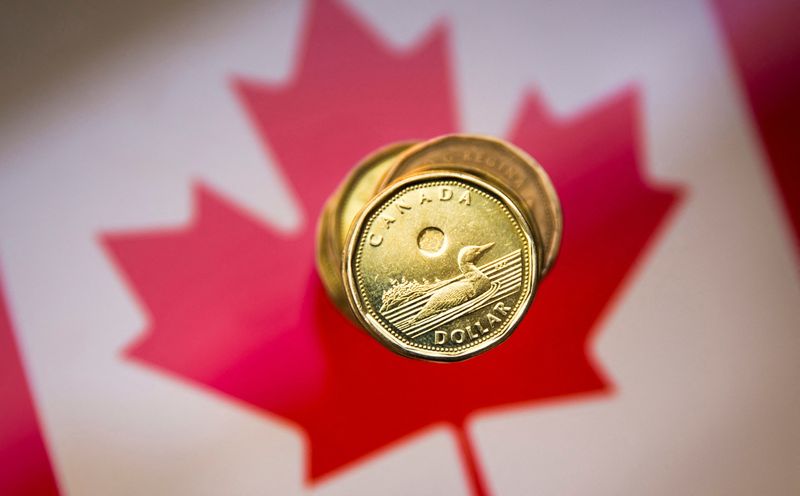By Fergal Smith
TORONTO (Reuters) - Canada's dollar will gain less than previously thought over the coming year as the domestic economy has lost some sensitivity to oil prices and the Bank of Canada potentially lagging the Federal Reserve in hiking rates, a Reuters poll showed.
The currency has weakened over 7% against the U.S. dollar since the start of 2022. That's a better performance than all other G10 currencies but almost all of the decline has come since mid-August.
According to the median forecast of nearly 30 currency analysts in the Oct. 28-Nov. 1 poll the Canadian dollar will weaken over 0.5% to 1.37 per U.S. dollar, or 72.99 U.S. cents, in three months' time, compared with the October forecast of 1.34.
It was then expected to rally to 1.31 in a year, versus 1.30 expected in last month's poll.
"We think that when it comes to central bank action that the Bank of Canada is going to end up with a lower terminal rate," said Bipan Rai, North America head of FX Strategy at CIBC (TSX:CM) Capital Markets.
"That implied spread between terminal rates in Canada and the United States will probably have to widen out further and that could take the U.S. dollar higher across the board including against the Canadian dollar."
The Bank of Canada increased its benchmark interest rate last week by half a percentage point to 3.75%, coming up short on calls for another 75 basis points move, as it forecast the economy, with its outsized housing market, would stall over the next three quarters.
Investors are betting on a terminal rate, or peak level for interest rates, from the BoC in the coming months of 4.25%. That's about three-quarters of a percentage point less than is expected for the Federal Reserve's terminal rate..
A possible reduction in global economic uncertainty next year could help the loonie recover some ground but the price of oil, one of Canada's major exports, might be less influential for the currency than it has been historically, analysts say.
Oil has climbed over 18% this year, contrasting with losses for the loonie, while it jumped 55% in 2021.
"All of the volatility in oil prices tends to transmit less today into volatility in the currency than it has in prior periods because the Canadian economy is less levered to the energy sector," said Royce Mendes, head of macro strategy at Desjardins.

"We see less interest in investing money back into the ground in the oil patch when oil prices are high and so there's less room (for the currency) to fall when oil prices are low."
(For other stories from the November Reuters foreign exchange poll:)